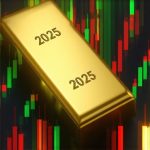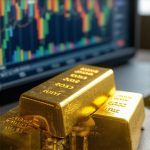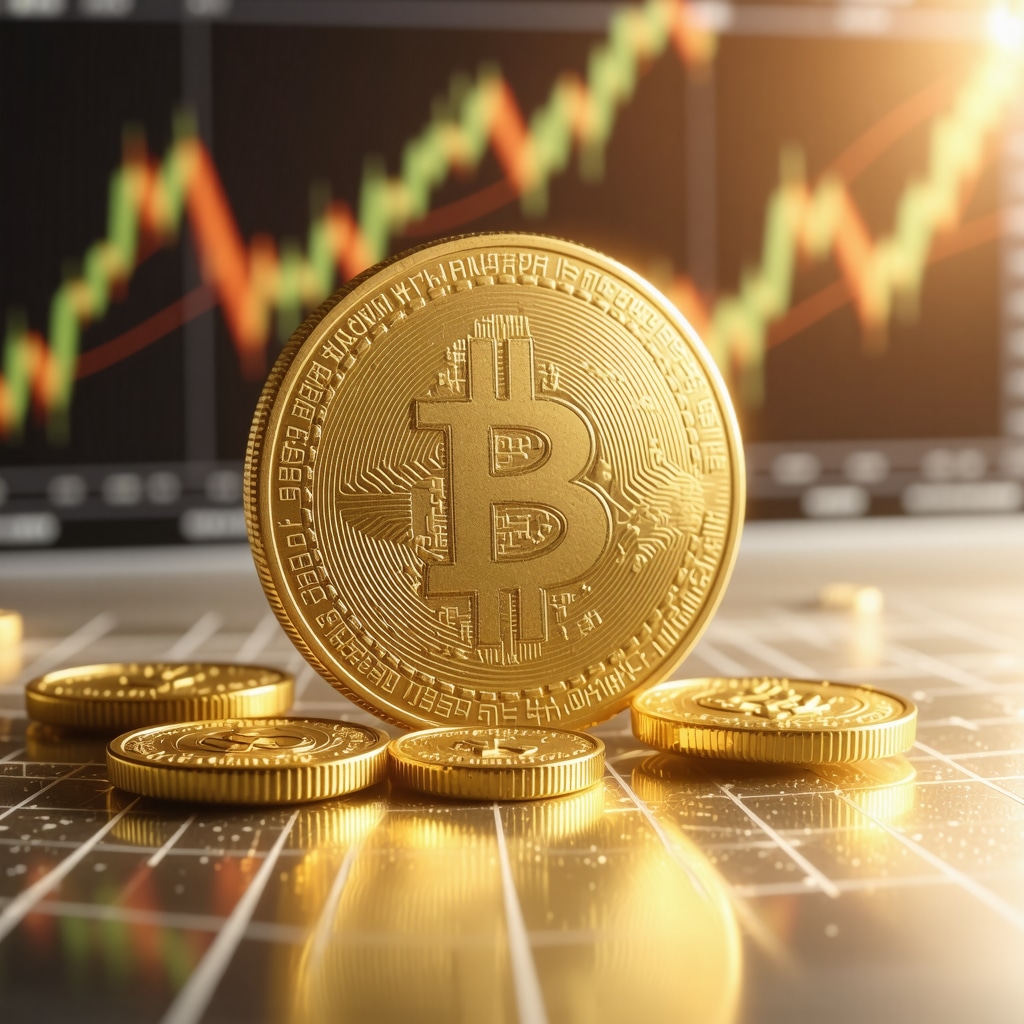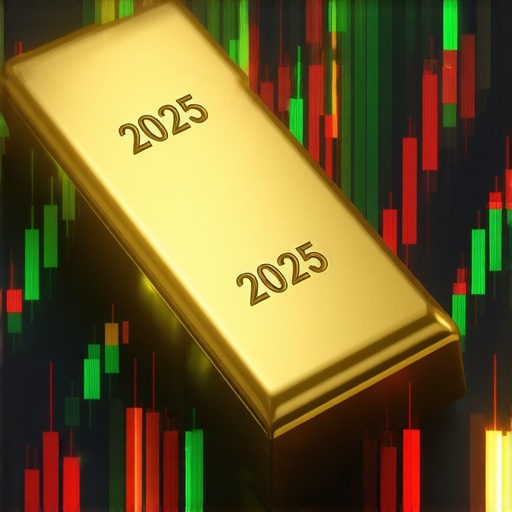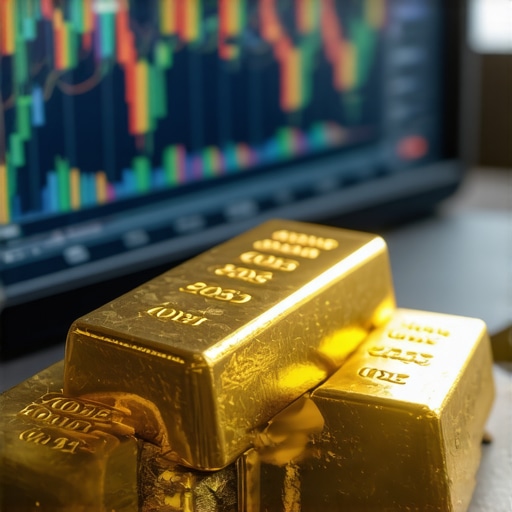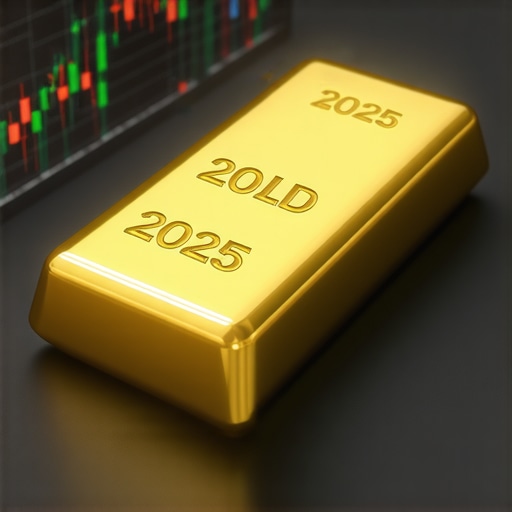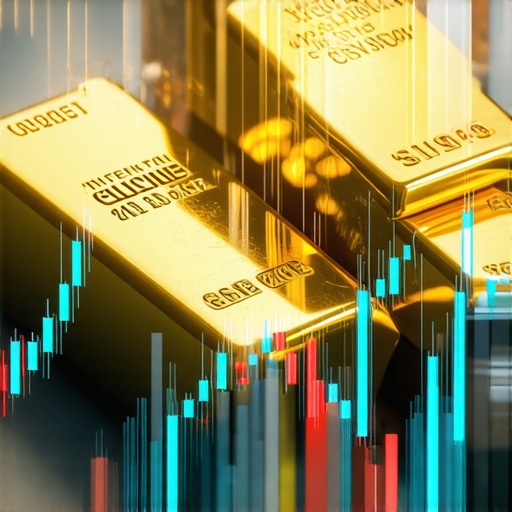Unearthing the Forces Behind 2025’s Gold Price Movements
As we delve into 2025, the gold market remains a fascinating interplay of economic undercurrents, geopolitical tensions, and evolving investor sentiment. Understanding what drives the gold price today requires more than just glancing at charts; it demands a deep dive into the multifaceted dynamics that influence market valuation. This article unpacks the primary catalysts shaping gold’s trajectory this year, offering investors and enthusiasts an expert lens to navigate the complex landscape.
Global Economic Ripples and Their Golden Echoes
Gold has long been revered as a hedge against economic uncertainty and inflationary pressures. In 2025, inflation trends continue to play a pivotal role. Central banks’ monetary policies—especially the balance between tightening and easing—directly impact gold’s appeal as a safe haven. For instance, persistent inflationary pressures often push investors toward gold to preserve purchasing power, spurring demand and price appreciation. Conversely, aggressive interest rate hikes can dampen gold’s allure because higher yields on bonds and savings accounts compete with non-yielding gold.
Notably, the Federal Reserve and the European Central Bank’s maneuvers this year are critical. Their decisions reverberate across global markets, affecting currency strength and investor behavior, with gold often acting as a barometer of confidence or fear.
Supply Constraints and Demand Surges: The Market Balancing Act
Gold’s market value is intricately tied to the equilibrium between supply and demand. 2025 witnesses unique supply-side challenges, including disruptions in mining operations due to environmental regulations and geopolitical risks in key mining regions. These constraints tighten physical gold availability, tipping market dynamics.
Simultaneously, demand from emerging markets, jewelry consumption, and technology sectors continues to grow. Central banks, particularly in Asia, are increasing their gold reserves, a strategic move that bolsters demand while signaling confidence in gold as a financial pillar. This dual pressure of constrained supply and rising demand creates fertile ground for price volatility and potential upward trends.
How Do Central Bank Gold Purchases Influence Market Prices in 2025?
Central banks play a decisive role in shaping gold prices through their buying patterns. When institutions like the People’s Bank of China or the Reserve Bank of India ramp up gold acquisitions, it not only absorbs available supply but also sends a strong signal to global markets about the perceived value and stability of gold. These purchases can trigger speculative buying, amplifying upward price momentum.
Moreover, central bank gold buying often reflects strategic moves to diversify foreign reserves away from fiat currencies, especially amid geopolitical tensions and currency volatility. For investors looking to understand price movements, monitoring central bank activity is indispensable. For deeper insights on this topic, explore how gold prices react to central bank purchases in 2025.
Investor Psychology and Market Sentiment: The Invisible Hand
Beyond tangible economic factors, investor sentiment profoundly influences gold prices. In times of geopolitical uncertainty, such as conflicts or trade disputes, gold’s status as a safe haven shines brighter, attracting risk-averse capital. Social media trends, news cycles, and expert forecasts also sway market psychology, sometimes triggering rapid price swings.
Understanding these behavioral components is crucial for crafting effective investment strategies. Seasoned investors often combine fundamental analysis with sentiment indicators to time their entries and exits more precisely.
Strategizing Your Gold Investments in 2025
Given the complex factors at play, a balanced and informed approach to gold investment is paramount. Diversifying across physical gold, ETFs, and mutual funds can mitigate risks associated with market volatility. For beginners or those seeking to refine their portfolios, resources like 2025 gold price forecast insights offer valuable guidance on navigating these trends.
Considering physical gold, it’s essential to source from reputable dealers and understand storage and security nuances. For instance, choosing between coins and bars depends on liquidity needs and premium costs, details covered comprehensively in best physical gold investments: coins versus bars explained.
Engage with Us: What Are Your Thoughts on Gold’s Role in Today’s Market?
We invite readers to share their perspectives or questions about the evolving gold market in 2025. Your insights enrich the discussion and help build a community of informed investors.
Authoritative source: The World Gold Council’s latest report on global gold demand offers an in-depth analysis of supply-demand dynamics and central bank trends, serving as a foundational reference for understanding current market forces.
Personal Reflections on Balancing Physical and Digital Gold
Over the years, I’ve often grappled with the choice between investing in physical gold versus digital gold assets like ETFs or gold-backed cryptocurrencies. Each has its own charm and challenges. Physical gold feels tangible and secure; I can hold it, store it safely, and know it’s there regardless of digital glitches. Yet, the convenience and liquidity of digital gold investments make them attractive, especially in volatile times when quick decisions matter.
In 2025, this dilemma is more pronounced as technology evolves and market dynamics shift. I recall a friend who leaned heavily into gold ETFs during last year’s market turbulence and managed to rebalance quickly, capturing gains. Meanwhile, I held onto my bullion, appreciating its stability but missing out on some short-term opportunities. This experience underlines the importance of blending both approaches for a more resilient portfolio.
Understanding the Impact of Geopolitical Shifts on Gold Demand
Another layer I’ve learned to watch closely is the geopolitical landscape. Events like trade tensions, regional conflicts, or policy shifts can send ripples through gold markets. For instance, the recent escalation in trade disputes led to an uptick in gold prices as investors sought safe havens. From personal observation, staying informed—beyond just financial news—helps anticipate these market moves.
Experts from the World Gold Council emphasize that geopolitical risks often accelerate gold demand, sometimes unpredictably. This makes gold not just a financial asset but a strategic shield in uncertain times. Such insights have encouraged me to monitor global developments actively and adjust my gold holdings accordingly.
Are You Considering Both Physical and Digital Gold in Your Investment Strategy?
It’s a question I often pose to fellow investors: have you found a comfortable balance between physical gold and its digital counterparts? How do you weigh liquidity against tangibility? Sharing your approach can offer fresh perspectives and help others refine their strategies.
For those seeking to deepen their understanding, resources like physical gold vs digital gold: which investment is best for you provide comprehensive comparisons that I personally found enlightening.
Practical Tips: Safeguarding Your Physical Gold Investments
Investing in physical gold brings practical considerations that can’t be overlooked. From choosing reputable dealers to ensuring secure storage, these decisions impact both the safety and the value of your investment. I learned this the hard way when a small oversight in storage led to unnecessary anxiety during a home renovation.
Nowadays, I prefer using professional vault services recommended by trusted sources. They offer insurance and peace of mind that home safes simply can’t match. Moreover, proper documentation and appraisal help maintain liquidity when selling or leveraging your gold holdings.
For detailed advice on this front, I recommend checking out ultimate guide to physical gold storage and security tips. It’s been a go-to resource in my journey.
Decoding Complex Gold Price Volatility: Beyond Basic Market Fluctuations
In 2025, gold price volatility transcends traditional supply-demand metrics, influenced increasingly by algorithmic trading and derivative markets. Sophisticated investors recognize that gold’s price swings are not solely reactions to macroeconomic data but also to the rapid-fire transactions executed by high-frequency trading systems. These systems can amplify short-term price movements, creating opportunities and risks that require advanced risk management tools and a deep understanding of market microstructure.
Additionally, the growing prominence of gold futures and options markets introduces layered complexity. Leverage inherent in these instruments can accelerate price momentum, sometimes decoupling gold prices momentarily from physical market realities. Understanding the interplay between physical gold demand and paper gold trading volumes is critical for anticipating sudden shifts and positioning portfolios accordingly.
What Role Do Derivative Markets Play in Gold Price Formation During Periods of Economic Uncertainty?
Derivative markets, including futures and options, serve as both hedging platforms and speculative arenas. In times of economic uncertainty, increased derivative activity can lead to heightened price volatility as traders reposition their exposures rapidly. According to the Commodity Futures Trading Commission’s 2023 report, the surge in speculative positions during geopolitical tensions often precedes sharp gold price spikes. For investors, monitoring open interest and volume in these markets provides advanced signals of impending volatility and potential price reversals.
Integrating ESG Considerations Into Gold Investment Decisions
Environmental, Social, and Governance (ESG) criteria have emerged as pivotal factors shaping gold mining operations and investor preferences. In 2025, sustainable mining practices and ethical sourcing increasingly influence gold supply chains and, consequently, market valuations. Investors prioritize gold from mines adhering to stringent ESG standards, sometimes willing to pay premiums for certified sustainable gold.
This shift also impacts mining companies’ cost structures and exploration activities, potentially constraining supply growth. Moreover, ESG-focused funds incorporating gold face unique challenges balancing ethical mandates with market dynamics. Advanced investors are leveraging ESG analysis alongside traditional financial metrics to identify resilient gold assets aligned with long-term sustainability trends.
Harnessing Technological Innovations to Optimize Gold Portfolio Management
Emerging technologies such as blockchain-based gold tokenization and AI-driven analytics are revolutionizing how investors access and manage gold assets. Tokenization enhances liquidity and fractional ownership, lowering barriers to entry and enabling dynamic portfolio adjustments in real-time. Meanwhile, AI models integrate multifactor data—from macroeconomic indicators to sentiment analysis—to generate predictive insights on gold price movements.
These tools facilitate sophisticated risk modeling and enable personalized investment strategies tailored to individual risk tolerances and market outlooks. However, technological adoption requires careful due diligence to mitigate cybersecurity risks and regulatory uncertainties, emphasizing the need for expert guidance in this evolving landscape.
How Can Blockchain Technology Transform Traditional Gold Investment Paradigms in 2025?
Blockchain technology introduces transparency, traceability, and efficiency into gold markets by digitizing ownership and streamlining transactions. This innovation reduces counterparty risk and enhances trust among market participants. Leading firms are developing gold-backed tokens compliant with regulatory standards, promising near-instant settlement and lower transaction costs.
However, challenges remain regarding regulatory harmonization and custodial security. Investors must weigh these factors carefully, seeking platforms with robust compliance frameworks and auditability. For a comprehensive exploration of blockchain’s impact on gold investments, visit Investopedia’s detailed analysis on blockchain and gold investing.
To deepen your expertise in these advanced gold investment strategies and technology integrations, consider engaging with our upcoming webinars and expert-led discussions. Stay ahead in 2025’s dynamic gold market by harnessing cutting-edge insights and tools.
Unraveling the Influence of Algorithmic Trading on Gold Price Volatility
In 2025, the gold market experiences unprecedented volatility partially driven by the surge in algorithmic and high-frequency trading (HFT) activities. These advanced trading systems execute rapid-fire transactions that can exacerbate short-term price swings, often decoupling gold’s price from underlying physical demand and supply fundamentals. Sophisticated investors must therefore incorporate knowledge of market microstructure and leverage advanced analytics to anticipate and navigate these fluctuations effectively.
How Does Algorithmic Trading Impact Long-Term Gold Price Stability Amid Economic Stress?
Algorithmic trading introduces liquidity but can also amplify market noise during periods of economic stress, causing sharper price spikes or drops. According to the Commodity Futures Trading Commission’s 2023 report, spikes in speculative derivative positions often precede heightened volatility in gold prices during geopolitical crises. Investors monitoring open interest and volume in futures markets gain advanced foresight into possible price reversals, enabling more informed risk management strategies.
The ESG Paradigm: Redefining Gold Supply and Investor Preferences
Environmental, Social, and Governance (ESG) considerations have become critical determinants in gold mining and investment decisions. Mining operations adhering to strict ESG standards command premium valuations, reflecting growing investor demand for ethically sourced metals. This trend constrains supply growth as companies invest more heavily in sustainable practices, which may increase production costs but enhance long-term operational resilience.
Investors integrating ESG metrics into their portfolios benefit from identifying mining firms with robust governance and transparent social responsibility frameworks, mitigating reputational risks and aligning investments with evolving regulatory landscapes.
Blockchain and Tokenization: Pioneering a New Era in Gold Investment Accessibility
Blockchain technology is revolutionizing gold investment by enabling tokenization—digitally representing physical gold assets on distributed ledgers. This innovation enhances liquidity, reduces transaction friction, and democratizes access to gold through fractional ownership. Investors can trade gold tokens with near-instant settlement times and improved transparency, fostering trust and operational efficiency.
However, regulatory compliance and custody solutions remain paramount considerations. Platforms offering audited reserves and regulatory-aligned frameworks are essential for mitigating counterparty risks inherent to digital assets.
What Are the Challenges and Opportunities in Adopting Blockchain-Based Gold Investments?
While blockchain-based gold tokens offer compelling benefits such as traceability and liquidity, challenges include navigating fragmented international regulations and ensuring secure custodianship of physical gold backing the tokens. As detailed in Investopedia’s comprehensive analysis, investors must perform rigorous due diligence when selecting platforms, balancing innovation with security and compliance to capitalize on this transformative investment avenue.
Strategic Call to Action: Elevate Your Gold Investment Approach in 2025
Amid the evolving gold landscape shaped by technological innovation, ESG imperatives, and complex derivative markets, staying informed and adaptive is crucial. We encourage investors to engage actively with advanced analytical tools, participate in expert-led webinars, and explore diversified gold exposure—including both physical and digital assets—to build resilient portfolios. Harness these insights to master the sophisticated gold market dynamics defining 2025 and beyond.
Frequently Asked Questions (FAQ)
What are the primary economic factors influencing gold prices in 2025?
Gold prices in 2025 are chiefly influenced by inflation trends, central bank monetary policies, and currency fluctuations. Persistently high inflation drives demand for gold as a hedge, while interest rate changes by major central banks like the Federal Reserve affect opportunity costs of holding non-yielding gold. Additionally, currency strength, especially of the US dollar, inversely impacts gold prices, making these economic factors critical for investors to monitor.
How do central bank gold purchases affect market dynamics this year?
Central banks, particularly in Asia, significantly impact gold prices through their reserve-building activities. Large-scale purchases reduce available physical supply and signal confidence in gold’s stability, often triggering speculative buying. This dual effect amplifies upward price movements, making central bank buying patterns a key indicator for market participants.
In what ways does investor psychology shape gold price volatility?
Investor sentiment, shaped by geopolitical tensions, news cycles, and social media trends, can cause rapid price swings independent of fundamental supply-demand changes. During uncertain times, gold’s safe haven appeal intensifies, attracting risk-averse capital and driving price spikes. Understanding these behavioral factors helps investors time market entries and exits more effectively.
What role do derivative markets and algorithmic trading play in gold price fluctuations?
Derivative markets, including futures and options, enable hedging and speculation, often increasing gold price volatility, especially during geopolitical or economic stress. Algorithmic and high-frequency trading amplify short-term price movements by executing rapid transactions that may temporarily decouple prices from physical market realities. Monitoring derivatives’ open interest and volume can provide foresight into potential price reversals.
How are ESG considerations transforming gold investment and mining?
Environmental, Social, and Governance (ESG) criteria are reshaping gold supply chains by prioritizing sustainable mining and ethical sourcing. Investors increasingly favor gold from ESG-compliant operations, sometimes paying premiums that reflect responsible practices. This trend constrains supply growth due to higher production costs but enhances long-term resilience and aligns investments with evolving regulatory and ethical standards.
What opportunities does blockchain technology present for gold investors?
Blockchain enables tokenization of physical gold assets, enhancing liquidity, transparency, and fractional ownership. This democratizes access and streamlines transactions with near-instant settlement. However, regulatory challenges and custodial security remain concerns. Investors should seek platforms with robust compliance and audited reserves to safely capitalize on these innovations.
How should investors balance physical and digital gold holdings in 2025?
A balanced approach combining physical gold’s tangibility and digital gold’s liquidity allows investors to mitigate risks and seize opportunities. Physical gold offers security and stability, whereas digital assets like ETFs and tokens provide flexibility and ease of trading. Portfolio diversification across both forms supports resilience amid market complexities.
What practical steps can safeguard physical gold investments?
Securing physical gold involves purchasing from reputable dealers, selecting appropriate forms (coins vs bars), and ensuring safe storage through professional vault services with insurance coverage. Proper documentation and appraisal facilitate liquidity and protect asset value. These practices minimize risks of theft, damage, and disputes during resale.
How can advanced analytics improve gold investment decisions?
AI-driven analytics integrate economic indicators, sentiment data, and market microstructure insights to generate predictive models for gold price movements. These tools help investors manage risk, optimize entry and exit points, and customize strategies aligned with individual risk tolerance and market outlook, enhancing decision-making accuracy.
What are the risks associated with gold price volatility caused by algorithmic trading?
While algorithmic trading increases market liquidity, it can also amplify short-term volatility and create sudden price swings unrelated to fundamental factors. This unpredictability may pose risks for less experienced investors and requires sophisticated risk management and awareness of market microstructure to navigate effectively.
Trusted External Sources
- World Gold Council (WGC): The premier global authority on gold demand, supply, and investment trends, offering comprehensive reports and data critical for understanding market dynamics.
- Commodity Futures Trading Commission (CFTC): Provides authoritative analysis and regulatory oversight on derivative markets, including futures and options, essential for tracking speculative activity impacting gold prices.
- Investopedia: Offers detailed, expert-reviewed articles on innovative topics like blockchain and gold tokenization, bridging complex technology with practical investment guidance.
- International Council on Mining and Metals (ICMM): Delivers insights on ESG standards and sustainable mining practices, informing the evolving ethical landscape of gold production.
- Financial Times and Bloomberg: Leading financial publications that provide up-to-date geopolitical and economic news, essential for monitoring factors influencing gold market sentiment and volatility.
Conclusion
The gold market in 2025 is shaped by a sophisticated blend of macroeconomic forces, geopolitical shifts, technological innovation, and evolving investor preferences. Central bank activity continues to exert powerful influence, while ESG imperatives and blockchain-driven tokenization redefine investment paradigms. Algorithmic trading and derivatives introduce complex volatility patterns that require advanced analytical tools and strategic agility.
Investors who cultivate a nuanced understanding of these diverse factors—balancing physical and digital holdings, integrating ESG considerations, and leveraging cutting-edge technology—position themselves to navigate gold’s dynamic landscape successfully. Embracing informed, adaptive strategies empowers market participants to capitalize on gold’s enduring role as both a financial safeguard and a growth asset in uncertain times.
We invite you to share your insights, questions, or strategies concerning gold investments in 2025. Engage with our community and explore related expert content to deepen your mastery of this evolving market.

